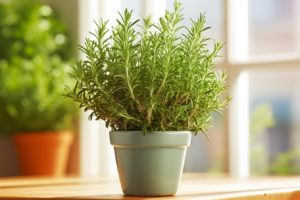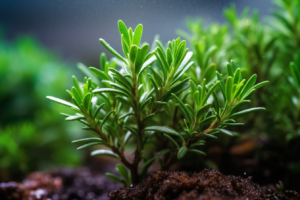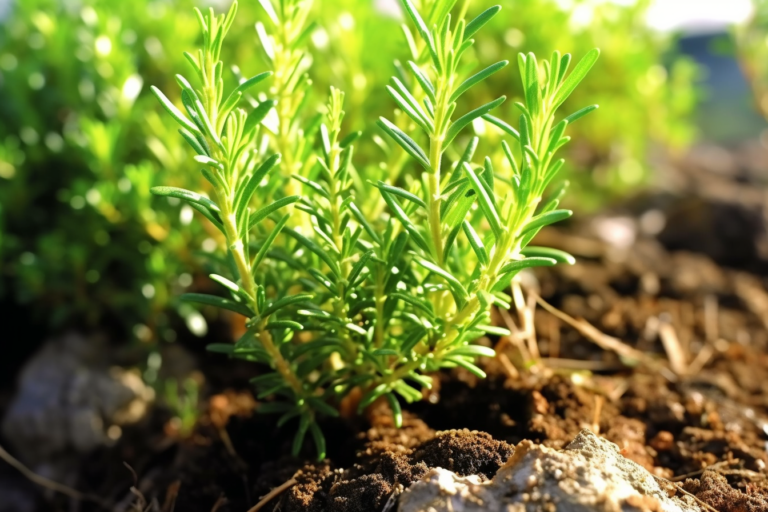As we venture into the world of gardening, we often encounter questions that are fundamental to the growth and development of our plants. One such question is, “how often should we water rosemary?” In this article, we will explore the intricacies of rosemary watering, providing you with expert tips and tricks to ensure your rosemary plants thrive. So, let’s dive in!
The Basics of Rosemary
What is Rosemary?
Rosemary (Rosmarinus officinalis) is an aromatic evergreen shrub that belongs to the mint family. This Mediterranean native is popular for its culinary, medicinal, and ornamental uses. Its needle-like leaves have a distinctive aroma and flavor, making it a staple in many kitchens.
The Importance of Proper Watering
Watering is crucial to the health of any plant, and rosemary is no exception. Providing the right amount of water is vital for maintaining healthy growth, preventing diseases, and ensuring a bountiful harvest. Overwatering or underwatering can cause the plant to suffer and eventually die.
How Often Do I Need to Water Rosemary?
Soil Type
The type of soil in which rosemary is planted plays a significant role in determining how often it needs water. Rosemary prefers well-draining soil, such as sandy or loamy soil. These soil types allow water to drain quickly, preventing root rot.
Climate and Weather
The climate and weather conditions have a direct impact on the watering frequency. In hotter and drier climates, rosemary will need more frequent watering, while in cooler andx more humid climates, less frequent watering is required.
Plant Size and Age
Younger plants generally require more frequent watering, as they have a smaller root system and are more susceptible to drying out. As the plant matures, its root system becomes more developed and can withstand longer periods without water.
Guidelines for Watering Rosemary
Now that we understand the factors influencing rosemary watering frequency, let’s dive into some general guidelines to help you maintain a healthy rosemary plant.
Monitor Soil Moisture
To determine when your rosemary needs water, check the soil moisture by sticking your finger about an inch into the soil. If it feels dry, it’s time to water your plant.
Water Deeply and Infrequently
It’s essential to water rosemary deeply, ensuring that the water reaches the root zone. This encourages a robust root system and allows the plant to go longer between watering. Generally, watering once a week is sufficient, but this may vary depending on the factors discussed earlier.
Avoid Overwatering
Overwatering can lead to root rot, which is a common problem in rosemary plants. To avoid this issue, ensure that the soil drains well and never let the plant sit in standing water.
Adjust Watering Frequency with Seasonal Changes
Rosemary may require more frequent watering during the hot summer months and less frequent watering during cooler months. Be mindful of seasonal changes and adjust your watering schedule accordingly.
Expert Tips for Rosemary Watering Success
Here are some expert tips to help you master the art of watering rosemary:
- Use a well-draining potting mix when planting rosemary in containers.
- Ensure your pots have drainage holes to prevent waterlogging.
- Consider using a moisture meter to monitor soil moisture accurately.
- Mulch around the base of the plant to help retain moisture and regulate soil temperature.
How Often to Water Rosemary Indoors?
When it comes to watering rosemary indoors, it’s important to strike a balance between keeping the soil moist and avoiding overwatering, which can lead to root rot. A good rule of thumb is to water your indoor rosemary plant thoroughly when the top inch of soil feels dry to the touch. This may mean watering your plant every 7-10 days, but the frequency will depend on factors such as the size of the pot, the temperature and humidity of your home, and the amount of light your plant receives.

To water your indoor rosemary plant, give it a deep watering until water starts to drain out of the bottom of the pot. Make sure to discard any excess water that accumulates in the saucer beneath the pot to prevent the roots from sitting in standing water. Additionally, it’s a good idea to mist your rosemary plant with water from a spray bottle every few days to keep the foliage hydrated and prevent it from drying out.
How Often to Water Rosemary Outdoors?
When it comes to watering rosemary outdoors, the frequency will depend on a variety of factors, including the climate, soil type, and sun exposure. As a general rule, you should water your outdoor rosemary plant deeply and infrequently, rather than giving it frequent shallow waterings. This encourages the roots to grow deeper and makes the plant more drought-tolerant over time.

In most cases, watering your outdoor rosemary plant once a week should be sufficient, although you may need to water more often during hot, dry spells or if your soil is particularly sandy and drains quickly. To check if your plant needs water, stick your finger into the soil around the base of the plant. If the soil feels dry to a depth of about an inch, it’s time to water.
When you water your outdoor rosemary plant, make sure to water at the base of the plant rather than sprinkling water over the foliage, which can encourage fungal growth. Water until the soil is moist but not waterlogged, and avoid getting water on the leaves as much as possible. Finally, consider adding a layer of mulch around the base of the plant to help retain moisture in the soil between waterings.
Conclusion
In conclusion, the key to successful rosemary watering lies in understanding the various factors that influence the plant’s water requirements. By monitoring soil moisture, watering deeply and infrequently, avoiding overwatering, and adjusting your watering schedule with seasonal changes, you can ensure that your rosemary plants flourish. Now that you’re equipped with the knowledge to care for your rosemary plants, it’s time to put these tips into practice and watch your plants thrive.
Frequently Asked Questions
How often should I water rosemary in containers?
Container-grown rosemary typically requires more frequent watering than plants grown in the ground. Check the soil moisture every few days, and water when the top inch of soil feels dry.
Can rosemary survive without water for an extended period?
Mature rosemary plants are drought-tolerant and can withstand periods without water. However, prolonged drought may cause stress and reduced growth.
How can I tell if my rosemary is overwatered or underwatered?
Overwatered rosemary plants may have yellowing leaves, a wilting appearance despite wet soil, and root rot. Underwatered plants may have dry, brittle leaves and exhibit stunted growth.
Can I use a self-watering system for my rosemary plants?
Self-watering systems can be beneficial for maintaining consistent soil moisture. However, ensure the system does not overwater the plant, as rosemary is sensitive to excessive moisture.
Should I water rosemary more frequently during the blooming period?
Rosemary plants may require slightly more water during the blooming period. Monitor the soil moisture closely and adjust your watering schedule as needed.

